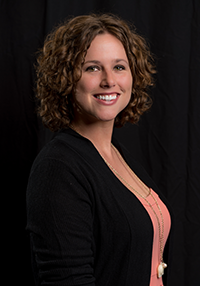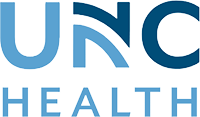How UNC Health Balances Centralized Messaging and Local Control
Setting up an internal communications structure that scales across healthcare entities


- Client
- UNC Health
- Industry
- Healthcare
- Solution
- Internal Communications
- Deliverable
- Weekly Newsletter and Executive Emails
UNC Health is a state entity and an affiliated enterprise of the University of North Carolina (UNC) system, comprised of 17 hospitals, 20 hospital campuses, and more than 900 clinics along with the clinical patient care programs of the UNC School of Medicine (SOM).
UNC Health exists to improve the health and well-being of North Carolinians and others it serves and to further the teaching mission of the University of North Carolina SOM. Over the past five years, UNC Health has provided over $800 million in uncompensated charity care. Its hospitals have received numerous awards and recognition for quality care, patient safety, and the overall patient experience.
Several years ago, UNC Health’s rapid growth strained communication processes. A centralized team in the Triangle region (Raleigh-Durham-Chapel Hill) coordinates system-wide communication for shared services teams and large system initiatives. Still, local hospitals, called healthcare entities, needed to be able to communicate directly with clinicians and other staff.
“We need to share information with all our teammates across our hospital network, healthcare system, and medical school. However, as late as 2020, we didn’t have a streamlined way to communicate with everyone,” says Rachael Jackson, Internal Communications Specialist at UNC Health.
Instead, she says the communications team used different processes, with some entities using Microsoft Outlook and others harnessing email marketing platforms with analytics to socialize messaging. As a result, the branding, templates, and content lacked consistency, and some stories got missed due to staff email overload. In addition, the team lacked insights into which content performed the best across entities.
“We couldn’t track anything consistently,” says Jackson. As a result, it was clear that change was needed.
After reviewing different internal communications platforms, UNC Health selected EmailOpen in 2021. Jackson says the primary drivers for adoption were the teams’ desire to streamline operational processes, increase messaging consistency and branding, make it easy to develop and share content across the state, and empower local communicators to create their messages.
“What’s happening with a hospital in Raleigh may not be relevant to one at the coast or in the mountains,” says Jackson.
In addition, EmailOpen is a mobile-optimized solution that enables busy clinicians and staff to read newsletters on the go.
Creating a Centralized Newsletter that Shapes Local Communications
Jackson and the Triangle team used EmailOpen’s Message Builder to develop a centralized email newsletter, UNC Health News, which is produced weekly. This newsletter is never published but provides scoopable content for the 13 entity communicators to use as they build their weekly newsletters.
The Triangle communications team worked with UNC Health IT experts and EmailOpen to set up mailing lists. The team maintains one list for the UNC School of Medicine and a second list for all hospitals and practices; both are segmented by teammates and leaders. The mailing lists are updated at 4 AM daily, ensuring that all current employees are included. Jackson serves as the primary administrator for the mailing lists to maintain oversight.
EmailOpen also collaborated with UNC Health’s communications team and graphic designers to create a brand for the backend newsletter, including templates with logos and imagery. EmailOpen also creates other templates as needed, such as when UNC Health extends the platform to additional entities.
The Triangle team launched with just three entities, each using the centralized newsletter to produce two versions of their weekly newsletter: one for leaders and one for teammates.
“We wanted to get our processes right, to ensure that our mailing lists were working well and that everyone could access and use the content. We also used this time to become experts on the EmailOpen platform to support the other entities as they rolled on,” says Jackson.
Implementing Operational Processes that Speed Up Communications
The Triangle communications team has set up its processes for maximal efficiency.
The team uses EmailOpen’s API to collect intranet content and pull it into the platform to create the main newsletter. The Triangle team then uses story headlines to tag specific entities that should use this content, making it easy for local communicators to scan items and identify which ones pertain to them. Entity communicators can use the import function within EmailOpen to gather system-wide content that should be shared in their newsletters, developing local interest stories to round out each issue. Alternatively, they can copy and paste stories from the main newsletter into their templates.
Jackson says the ability to drag and drop categories helps her team organize content, ensuring that the top-priority content for each issue is presented first.
In addition, all communicators have access to the account library, which has branded imagery, logos, executive headshots, and other assets. This library makes it easy for communicators to add visuals to stories and create executive messages, whether time-sensitive or routine.
Training New Team Members on Email Marketing Best Practices
Jackson and other Triangle team members trained on the EmailOpen platform before launching it at UNC Health. She also attends EmailOpen trainings when there is a major platform update. However, Jackson has chosen to train new hires on the platform herself rather than using the EmailOpen team for this capability.
“Many of our entity communicators are wearing multiple hats, so we wanted to make it as easy as possible for them to onboard into EmailOpen,” says Jackson. “We do our own training to share exactly how we’re using EmailOpen for UNC Health, including the processes we’ve built, such as the mailing list, centralized newsletter, and API. That way, we can onboard people very quickly.”
She also shares email marketing best practices, such as ensuring that content is relevant to locations and teammate roles, is short and easy to read, is designed to increase staff engagement, and links back to the intranet for more context.
Jackson says that most communicators feel comfortable sending email newsletters within a few days of training.
Using Analytics to Evaluate Content Effectiveness
EmailOpen provides analytics so the Triangle team and entity communicators can evaluate content effectiveness. Jackson says the newsletters average open rates of 70% or higher, indicating that the content achieves the desired results. In addition to sharing statewide news, local entities recognize and celebrate teammates, provide HR updates, and publicize events and volunteer opportunities.
“EmailOpen has been a game changer in how we communicate timely news and information across our healthcare system. With EmailOpen, we’ve been able to streamline our communications and track their effectiveness,” says Jackson.
Meet Rachael Jackson
Rachael Jackson is an Internal Communications Specialist II at UNC Health. In her current role, she gathers, creates, and organizes internal-facing content to inform and engage teammates across UNC Health. Previously, Jackson managed and maintained the digital properties of various organizations across multiple industries.
